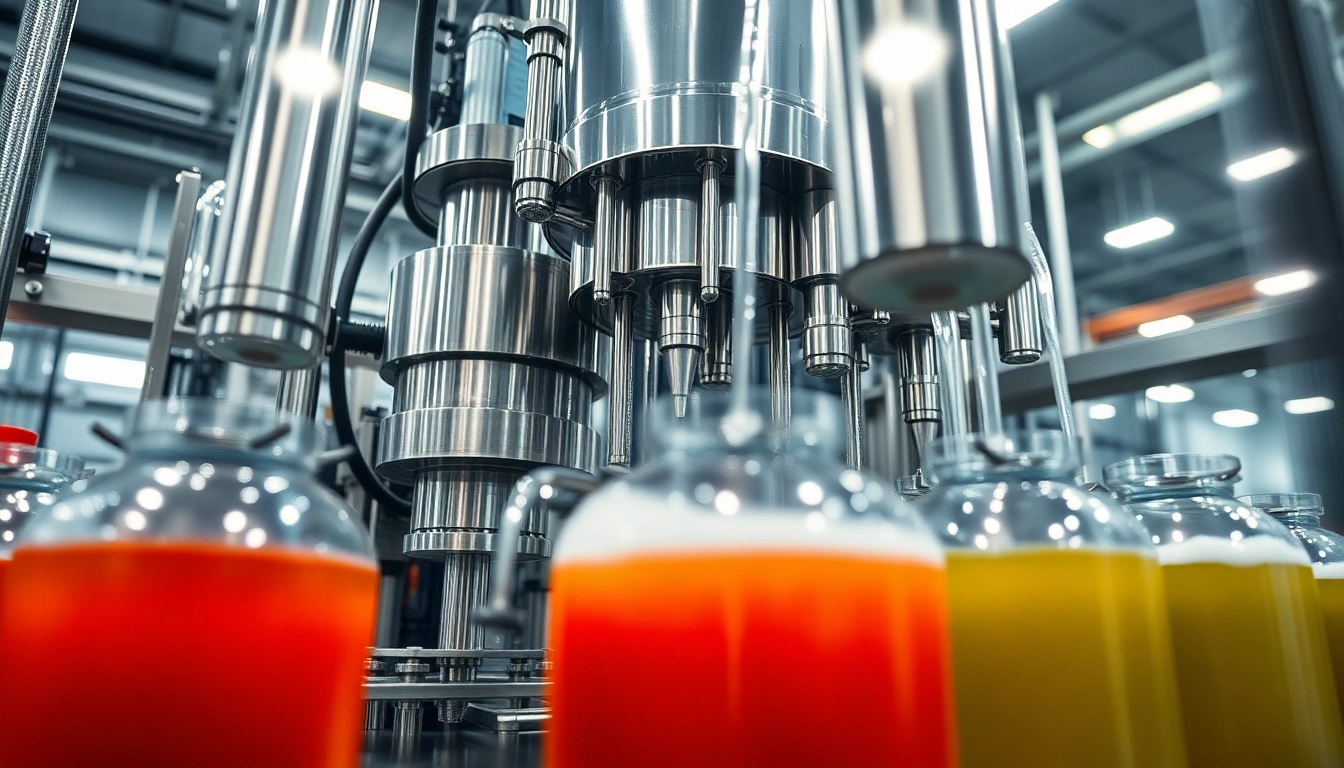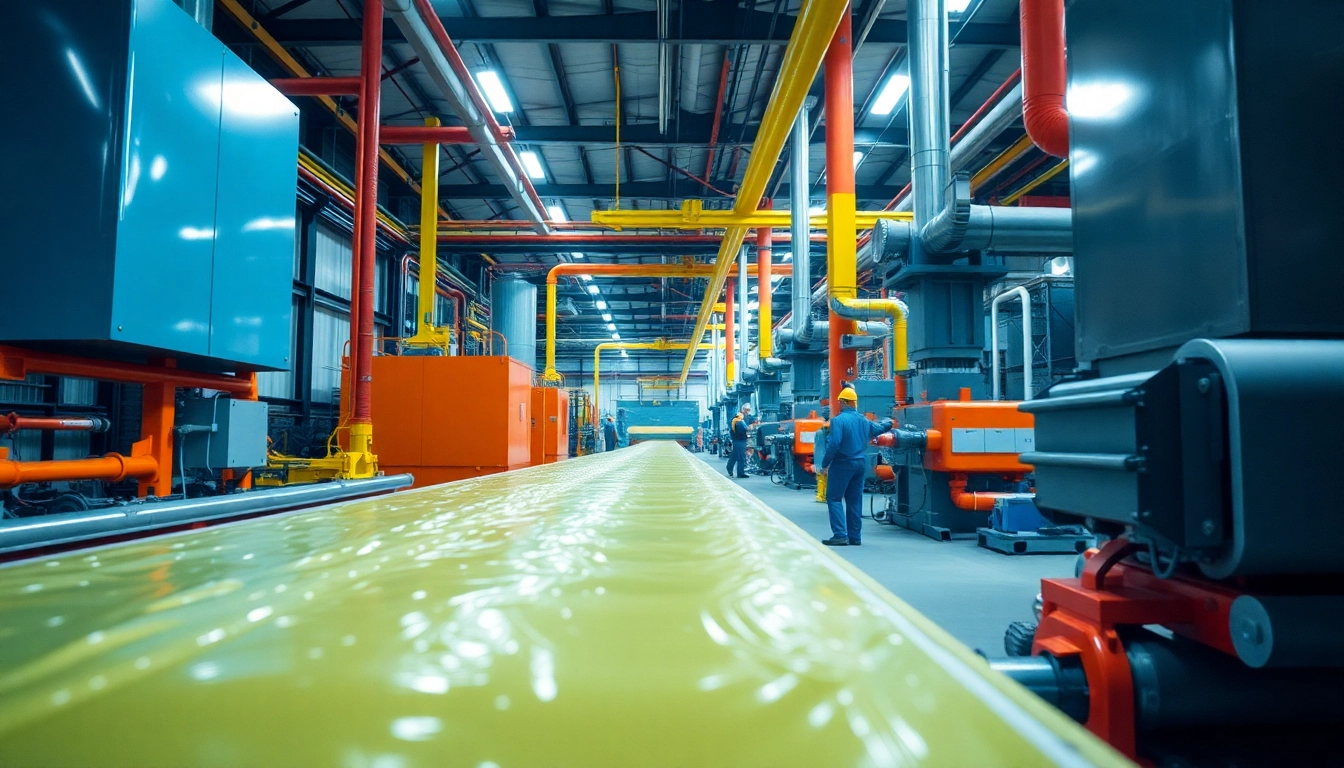Introduction to Machine Vision
In the age of automation, machine vision stands out as a pivotal technology that enhances the capabilities of industrial operations. With the rise of competition and the demand for precision and quality, understanding machine vision becomes essential for businesses aiming to thrive in various sectors, including manufacturing, logistics, and quality control. This article delves into the intricacies of machine vision, exploring its definition, evolution, components, applications, differentiations from computer vision, and future trends.
What is Machine Vision?
Machine vision refers to the technology and methodologies that enable machines to interpret visual information from the world. It encompasses the use of cameras, sensors, and sophisticated software to perform tasks such as inspection, identification, and measurement autonomously. The core ability of machine vision systems lies in their capacity to convert images into actionable insights, facilitating decision-making processes in real-time.
Historical Development of Machine Vision Technology
The journey of machine vision technology mirrors the progression of computing and digital imaging. Initially, in the late 1960s and early 1970s, machine vision systems were rudimentary, primarily used in research environments. As computing power and image processing algorithms developed through the 1980s and 1990s, machine vision began to make significant inroads into commercial applications. The introduction of affordable digital cameras and advancements in artificial intelligence in the 2000s have exponentially increased the accessibility and efficacy of machine vision systems across industries.
Importance of Machine Vision in Modern Industries
Machine vision has become indispensable in numerous industries due to its ability to enhance quality control, increase production speeds, and reduce costs. In manufacturing, for instance, machine vision systems can consistently inspect products for defects, ensuring that only high-quality goods reach consumers. Logistics operations leverage machine vision for automated sorting and tracking, streamlining the supply chain. Overall, the integration of machine vision fosters operational efficiency and competitive advantage in a fast-paced economic landscape.
Core Components of Machine Vision Systems
Cameras and Imaging Sensors
The first step in a machine vision system involves capturing images of the objects or scenes to be analyzed. High-resolution industrial cameras equipped with various imaging sensors are employed to obtain clear and accurate visual data. Different types of sensors, such as charge-coupled devices (CCDs) and complementary metal-oxide-semiconductors (CMOS), serve distinct purposes depending on the application requirements. For example, CCDs are commonly used for high-quality imaging in static applications, while CMOS sensors offer speed and efficiency in dynamic environments.
Lighting Techniques in Machine Vision
Effective lighting is crucial in machine vision as it significantly impacts the quality of captured images. Various lighting techniques, including backlighting, structured lighting, and diffuse lighting, are employed to enhance contrast and highlight features in the image. Proper lighting setups help minimize shadows and glare, which can obscure details and lead to inaccurate analysis. By customizing lighting based on the surface characteristics and environment of the objects being inspected, companies can achieve optimal imaging results.
Software Algorithms for Image Processing
After image capture, processing software plays a critical role in interpreting and analyzing the visual data. Algorithms powered by artificial intelligence, such as machine learning and deep learning techniques, enable systems to not only detect but also classify and measure objects with high accuracy. Advanced software solutions can perform complex tasks, such as pattern recognition, optical character recognition (OCR), and defect detection, making machine vision systems adaptable to a wide range of industrial applications. Furthermore, the continual development of software solutions ensures that machine vision systems can evolve with changing industry standards and technologies.
Applications of Machine Vision
Quality Control and Inspection
One of the most widespread applications of machine vision is in quality control. Automated inspection systems utilize machine vision to evaluate products for defects, ensuring adherence to quality standards. For instance, in the automotive industry, machine vision can detect paint imperfections or component misalignments, allowing for swift corrective actions. This not only streamlines the quality assurance process but also significantly reduces human error, leading to higher quality outputs and decreased waste.
Automation in Manufacturing Processes
In addition to inspection, machine vision systems play a vital role in automating various manufacturing processes. By integrating with robotic arms and conveyor systems, machine vision allows for precise positioning and handling of materials. Tasks that once required human intervention, such as assembly or part alignment, can now be performed efficiently, contributing to increased throughput and reduced labor costs. The scalability and flexibility of machine vision systems make them suitable for both high-volume production lines and custom manufacturing setups.
Integration with Robotics
The synergy between machine vision and robotics has paved the way for unprecedented advancements in automation. Robots equipped with machine vision capabilities can navigate complex environments, identify and manipulate objects, and make data-driven decisions. This combination is particularly beneficial in warehouses and fulfillment centers, where robotic systems can autonomously sort packages, identify products, and prepare items for shipping. As the integration of these technologies continues to evolve, we can expect even greater efficiencies and capabilities across various sectors.
Differences Between Machine Vision and Computer Vision
Functionality and Use Cases
While often used interchangeably, machine vision and computer vision serve distinct purposes. Machine vision primarily focuses on automating tasks within industrial environments, such as inspection, measurement, and guidance. It is outcome-oriented and often employed in scenarios requiring high precision and reliability. In contrast, computer vision encompasses a broader range of applications, including image recognition, augmented reality, and self-driving vehicles. It often utilizes deep learning techniques to analyze and interpret vast amounts of visual data, making it suitable for more complex and creative applications.
Technology Overlap and Distinctions
Despite their differences, machine vision and computer vision share underlying technologies, particularly in their use of cameras, algorithms, and processing units. Both fields utilize image processing techniques; however, machine vision prioritizes real-time analysis and operational efficiency, while computer vision often emphasizes understanding and interpreting visual data in diverse contexts. This distinction is crucial when selecting appropriate systems for specific applications, as the requirements and expected outcomes can vary significantly.
Choosing Between Machine Vision and Computer Vision
When deciding between machine vision and computer vision, organizations should consider their specific needs, available resources, and long-term strategic goals. Machine vision is often the go-to for applications requiring speed and reliability in manufacturing and inspection scenarios. However, as industries evolve and integrate more advanced technologies, companies may find opportunities to incorporate elements of computer vision to enhance innovation and broaden their service offerings. An optimal approach may involve combining both technologies to leverage their respective strengths for greater operational efficacy.
The Future of Machine Vision Technology
Emerging Trends in Machine Vision
The future of machine vision technology looks promising, with several emerging trends set to reshape its landscape. The integration of artificial intelligence and machine learning is fundamentally altering how machine vision systems operate, making them smarter and more capable. Technologies such as 3D imaging, real-time data analytics, and cloud-based solutions are enhancing flexibility and reducing implementation costs. Furthermore, the advent of Industry 4.0 is driving the convergence of machine vision with IoT devices, leading to smarter factories that can self-optimize based on real-time visual data.
Challenges Facing Machine Vision Adoption
While the potential for machine vision is vast, several challenges persist in its widespread adoption. These include the high initial setup costs, the need for specialized skills for system design and implementation, and the integration complexities with existing processes. Moreover, concerns regarding data privacy and security pose additional hurdles, particularly in industries that handle sensitive information. Addressing these challenges requires a collaborative approach involving technology providers, industry stakeholders, and regulatory bodies to create standards and best practices that promote successful implementations.
Future Applications and Innovations
Looking ahead, machine vision is poised to make significant contributions across various sectors, particularly in healthcare, agriculture, and environmental monitoring. In healthcare, machine vision could assist in the timely diagnosis of conditions through enhanced imaging techniques. Agriculture may benefit from machine vision in precision farming, allowing for efficient pest detection and yield estimation. Innovations in these areas will likely continue to emerge as the technology evolves, emphasizing the critical role of machine vision in addressing global challenges and improving quality of life.



